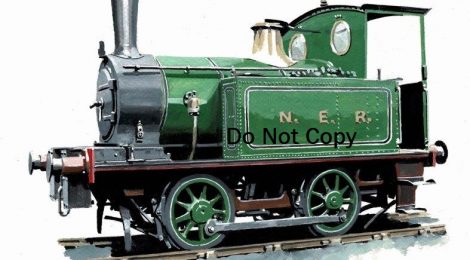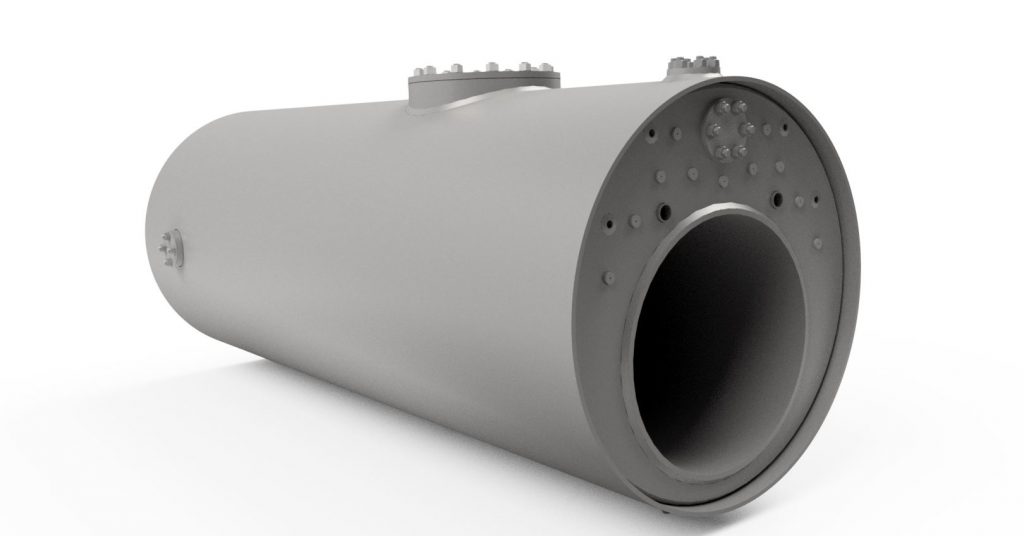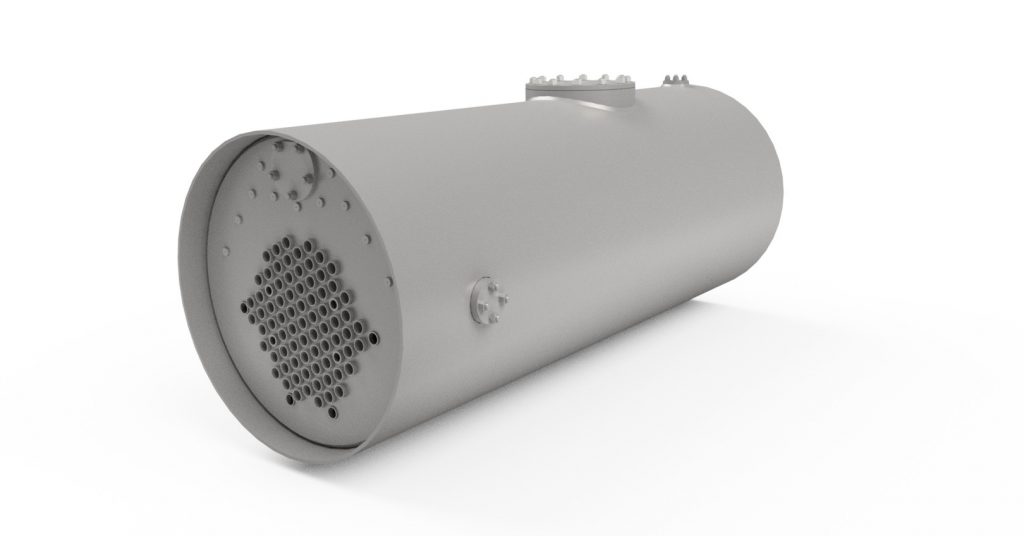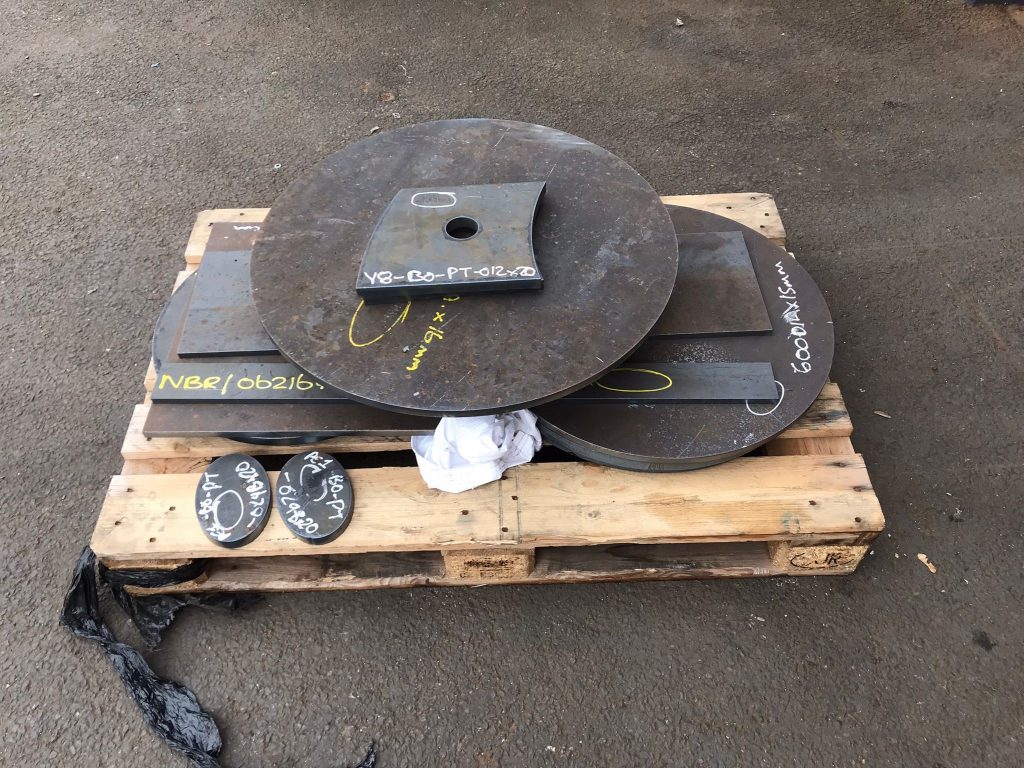
North Eastern Railway K Class – A new project for the 2020s…
Followers of the historic transport developments at Beamish may recall that over ten years ago we toyed with the idea of constructing a North Eastern Railway K class (the rebuilt locomotives later being known as LNER Y8s), for use at Rowley Station. The project generated some interest at the time, but was superseded by the eventual purchase of Dunrobin, and the long-term hire of the NER H class (LNER Y7) No.8088 for use at Rowley.
We are now very pleased to announce a new project to recreate a North Eastern Railway K class 0-4-0T, one of the smallest standard gauge locomotive designs created by a mainline company, and one with the very interesting feature of being fitted with a marine-style firebox. The project is being funded by a private benefactor in Darlington, who is keen to see the class recreated, and the new locomotive, to be numbered 559 (recreating the first of the class), will be constructed in Darlington, by North Bay Railway Engineering Services, who have brought the respective parties for this project together. It will be based at Beamish’s recreated NER railway station, operating over the branch line there alongside the former Duke of Sutherland’s private train locomotive, Dunrobin. I would very much expect us to take it across to the Colliery too, to operate with the chaldron waggons – as the K class were fitted with dumb buffers in addition to conventional sprung buffing gear.
Below: Jonathan Clay has produced this painting for us, showing the K class in its earliest NER livery. Image courtesy of Jonathan Clay.
There were five locomotives forming the K class, built by the North Eastern Railway at Gateshead works in 1890 and designed by T. W. Worsdell specifically for use at Hull Docks (his last design for the NER in fact, before he was replaced as Locomotive Superintendent by his half-brother, Wilson, due to failing health). The docks had a dense network of tightly curved sidings and so the short-wheelbase 0-4-0T arrangement, weighing just under 14 tons in working order (with original boiler design), was ideally suited to this environment. When built, the five locomotives (numbered 559 – 563) had marine boilers; whereby the firebox is circular and the fire bars are situated within a flue, itself within the circular boiler shell – at Beamish, Steam Elephant, Puffing Billy and Samson are all equipped with this arrangement.
The advantages are that these boilers are simple and therefore cheap to construct, in particular as there are no side or crown stays, no foundation ring, and few complicated shapes to flange or form. The heating surface of the marine design was 184 sq. ft. compared to the 389.3 sq. ft. of the later, conventional, design carried by the class from 1902. Therefore it can be seen that the marine design is not ideally suited for sustained running, but for shunting locomotives the design is effective, and was embraced by Bagnalls for many of their narrow gauge saddle tank locomotives.
The locomotives were fitted with 11 in. x 15 in. cylinders, had 3 ft. diameter coupled wheels with a 6 ft. wheelbase and Joy’s valve gear with slide valves was fitted. The water capacity was a very modest 250 gallons, and 4 cwt of coal was carried. The tractive effort for the K class was 5,999 lb – almost half the next size of up locomotive, the H class, or LNER Y7 (both surviving examples of which have operated at Beamish).
The marine boilers had worn out within a dozen years, so Gateshead works provided new ones in 1902, these being of conventional ‘locomotive’ design; these in turn being replaced in 1921 (this time with vessels manufactured at Darlington works). The locomotives were fitted with a handbrake, and coal was carried in a small bunker on the left hand side of the locomotive, and on the adjacent tank top. Photographs show that at least one of the class had curved wing plates fitted to the tank top in order to retain a slightly larger supply of coal.
Parallel shank buffers were fitted, though dumb buffers were also fitted for use with timber flats at the dockyard (and so will also be compatible with the chaldron waggons at Beamish). The locomotives were all allocated to Hull Dairycoates shed. There was some variety in their lives, with No.559 being allocated to work at the Royal Arsenal in London during the First World War, and then on the railway at Spurn Head at the start of the Second World War. It also ventured to York shed during the war, where it worked as shed pilot, though it was swapped with No.560 in 1943. No.560 was also the only example of the class to be fitted with a vacuum brake, to enable it to shunt locomotives around the shed at York.
No.559, upon which the new locomotive will be based, also lasted long enough to be taken into BR stock, allocated the number 68090 (having been No.8090 since 1946). However, it never carried this number, and was scrapped at Darlington works in November 1948. The new locomotive, bearing this number, will be fitted with a vacuum ejector (repeating the modification made to No.560) in order to operate passenger trains and will, appropriately, be constructed in NER territory, at North Bay Railway Engineering Services in Darlington. A pair of modern pop-safety valves will be fitted (the originals were Ramsbottom), enclosed within the brass shrouding atop the boiler. A completion date in 2025 is targeted, enabling 559 to be available to participate in events to celebrate the 200th anniversary of the Stockton & Darlington Railway as well as take up its duties at Beamish, alongside Dunrobin.
The photos below show the new boiler in CAD drawing form, a welded version of the original design (based on the original NER drawing). Images courtesy of NBRES.
Needless to say this is exciting news for Beamish and enthusiasts of the NER/LNER. It also goes without saying that we are extremely grateful to the project’s sponsor, for his vision and commitment to making this project a reality. The locomotive’s construction will be serialised on this blog and reported on NBRES’ own social media too. The last point answers what will inevitably be a popular question – what colour will No.559 be?! It will be Gateshead works’ version of NER green, named Saxony Green, with black and white lining and to the tank sides and cab back sheet, and white lining of the black tyre walls on the wheels. The tank sides bear the initials ‘NER’ whilst the works and number plate is mounted on the cab backsheet.
Below: Some of the boiler components have already been cut and delivered to NBRES, including the blackhead, tubeplate and other misc items. The barrels for the boiler and firebox flue are being rolled and it is expected that the boiler assembly will be complete by the close of the year. Photos courtesy of NBRES.
I will update the thread for the K class as there are potentially more images available to us, and which we hope to have use of in due course. You will also be able to read more on this in the latest edition of Steam Railway Magazine, which will be out on Friday. North Bay Railway Engineering Services will also feature updates on their own social media platforms.
A few Q&As might be useful at this point…
Q. What are the plans for reinstating operation of passenger trains at Rowley Station?
A. The Rowley branch line last operated in early 2020, before the pandemic was declared and even then, over a shortened route as the curved section required work to the trackbed, alignment and sleepers. This work was planned for 2020/21, but global events intervened and now, with a backlog of work to catch up on, and a reduced number of staff to operate on the steam side (as several members of the team understandably took opportunities elsewhere), our priorities have changed. The current operational focus is the Tramway and Waggonway, with additional operations taking place on the Colliery narrow and standard gauge railways. In addition to this, our reliance on hired-in locomotives is expensive and with Dunrobin under overhaul, and now the K class under construction, we will focus on our own motive power as the principle means of operating the exhibits here.
The motive power situation will reach a stage where each railway has two locomotives (Steam Elephant/Puffing Billy at the Waggonway, Dunrobin and 559 at Rowley, Glyder and Samson on the narrow gauge and Coffee Pot No.1 and SHDC No.18 on the Colliery standard gauge).
We now have in place a Transport Infrastructure Manager, who is focussing on the backlog of maintenance work as well as implementing some revisions to the inspection and renewal methodology. There is little point prioritising Rowley, until the arrival of Dunrobin has a robust date attached to it, and with the Tramway, then Waggonway, being our regular operations, these must take priority. It is unlikely the latter will be available until 2024, so that is the likely point at which we can consider reinstating operation at the NER exhibit.
Q. Does the construction of the K class impact upon the work being carried out on Dunrobin?
A. No, it will have no effect upon this at all and we are still committed to the overhaul of Dunrobin. This was paused in 2020 and we are in discussion with the Severn Valley Railway regarding a restart of this work and the programme for completion, hopefully with the aim of completing the project within the next two years.












An excellent and inspiring initiative! A really appropriate locomotive for the two sites at Beamish mentioned by Paul. Gateshead livery,too! Am already imaging ton’K’ on the chauldrons at the Colliery.
This is brilliant news, well done to all involved,
hopefully after rowley is re-opened (with station relaid as well on) then a start will be made on the wagons and long term stock. with freight operations being re-instated hopefully
Great that this New Build Project has been resurrected, the loco will fit in with the NER atmosphere at Rowley Station perfectly.Perhaps the G5 could visit Beamish when that new build project completed,a North Eastern Railway New builds gala Perhaps ?
Yes this is indeed good news but where does this leave Newcastle as this was second loco at rowley is it now third loco at rowley? a start on Newcastle:s overhaul would be a good idea too.
Hi Gary. The K class is a much more suitable second locomotive, and the funding for it is from a third-party. Starting Newcastle’s overhaul would be a significant financial commitment which, at the present time, would not stack up. It is safely stored under cover and it’s future will be considered in due course as I revise and update the strategic plan. I am mindful of the backlog of work in the queue and have noted numourous comments on social media regarding Malleable. I think, in the nex few months, I’ll write an article for the blog to explain position, funding and strategic needs as we take the museum forward and look at making the operations more robust and, wherever possible, more applicable to the north east story we aspire to tell. That’s not to rule out non-regional transport (we rely on Sheffield and Blackpool trams for instance), but, as you will see in coming weeks on the blog, there is a renewed focus on how and what we pitch as our core collections policy at Beamish. So worth watching this space…!!!
Thank you for the feedback though, and I can assure you that Newcastle is not forgotten.
Best wishes
Paul
Completion of the G5 hangs in the balance, as does the P2.
With the Tanfield Railway and all its small locos so close to Beamish, available f.o.c. for all to visit, this has all the appearance of a waste of time and money. Then again, it’s a private benefactor, so who cares?
If Newcastle has no long-term future at Beamish, why not let it go to the K. & E.S.R. or E.K.R. Manning Wardles played a major part in Col. Stephens history.
When driving and conducting on the tramway I get asked several times a day whether the trains are running at Rowley and the Waggonway. I have never once been asked about the colliery or narrow gauge railways.
The public are unable to see most of these and can not ride on them. I would have thought these should be a much lower priority than the other two.